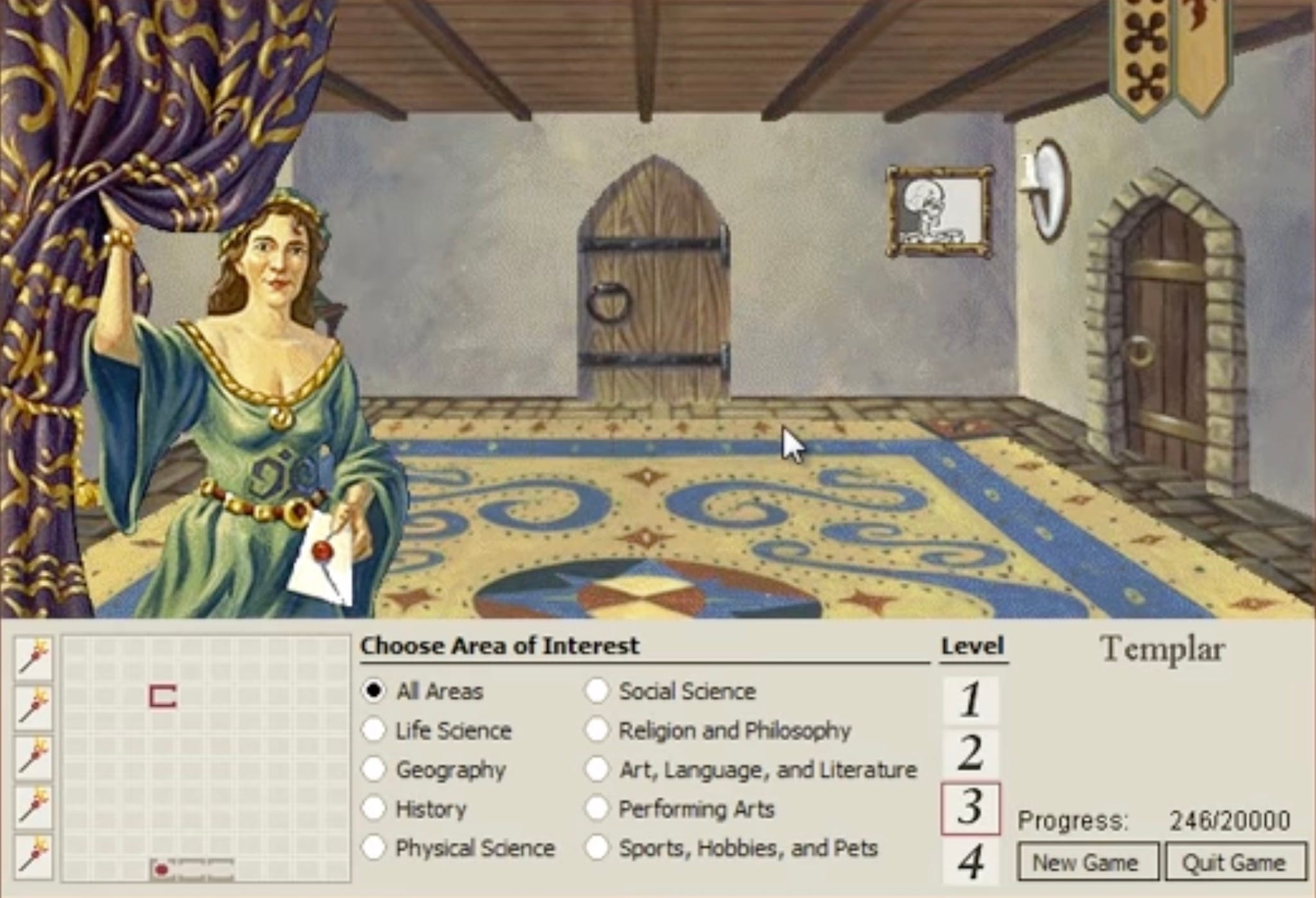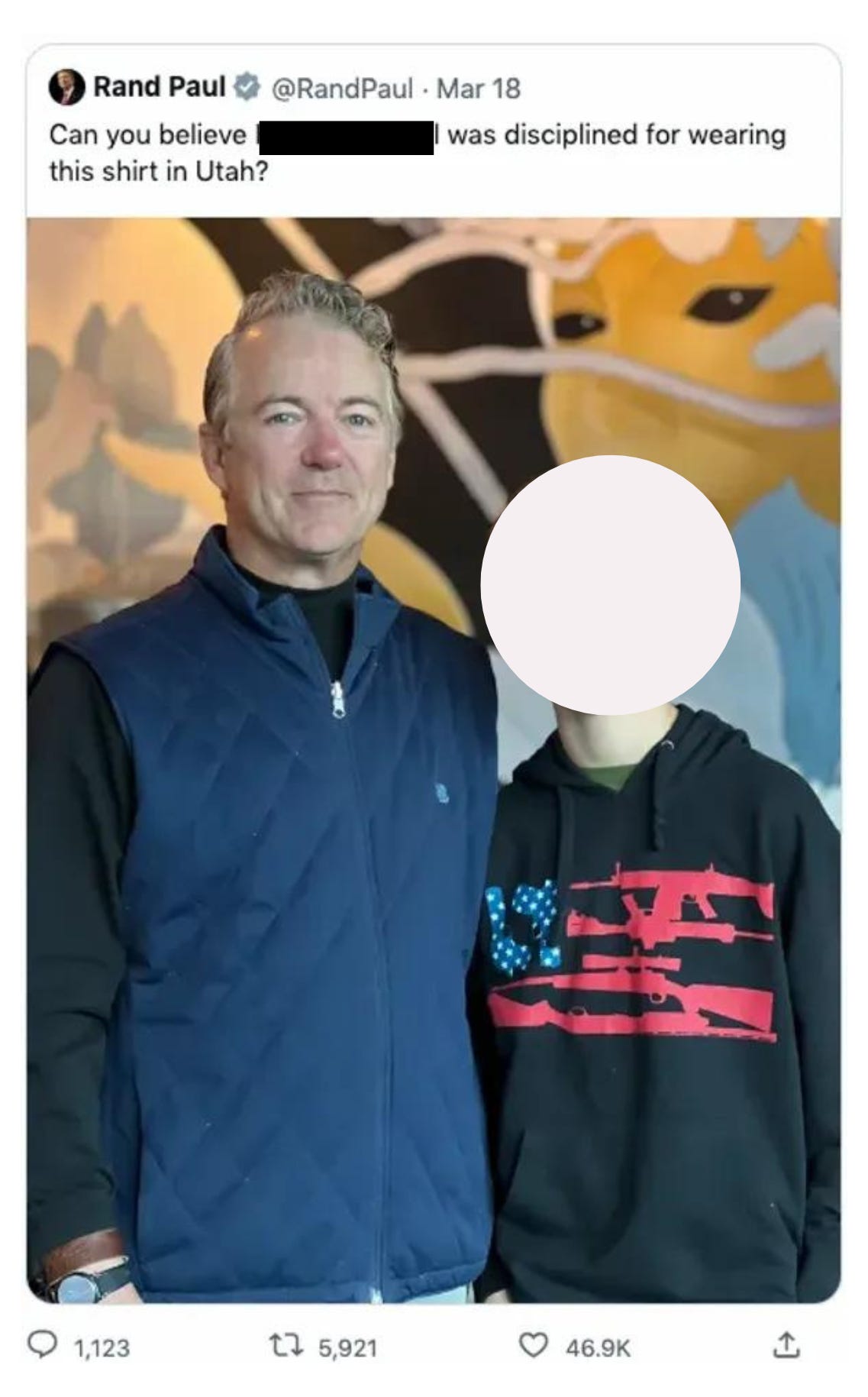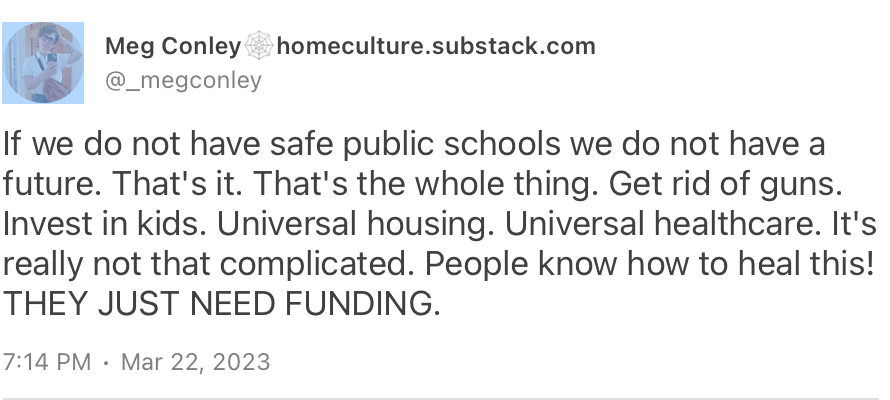A content warning. This was supposed to be a fun little essay about a girl gaming in the era of the Blueberry Apple iMac. I made cute little graphics and everything. But as I was finalizing the edit, I got a text from my daughter. There’d been a school shooting. And she wasn’t allowed to go outside. I am writing this while she is still in her school, waiting for the all clear from Denver police. And so now, an essay that originally ended with a laugh now ends with a lot of violence. It is where I am. It is where we are.
I was eight years old when my family got our first computer. It was 1993 and the whole thing seemed impossibly fancy. I loved pressing the button that popped out the little CD-ROM tray. (I wasn’t the only one enthused about CD-ROMs in 1993.) It seemed incredibly grand to live in a house with a computer room. The computer room was really a little tiny office in our little tiny rental. And it wasn’t just a room for a computer. It also held my mom’s sewing stuff, piles of bills and piles all the books that couldn’t fit anywhere else.
Doom was the first computer game I played. It’s a first-person shooter game where the player moves through levels of labyrinths set in Mars and in.…Hell, if I am remembering right? Along the way, the player collects ammo, health, and gear while killing the undead. It was released online, to people who knew how to be online and use shareware, the same year we got our computer. We didn’t get Doom until 1995, when it was released to more traditional consumers. I was ten. I thought it was thrilling to watch my dad play. I loved to squeeze a chair between my dad’s seat and my mom’s pile of fabric. I’d shout directions, warnings and offer consolation.
Our first playthrough, we found one room with a lot of loot and no undead. We couldn’t believe our luck! We thought he’d collected all of it when we saw a little pile of ammo set slightly apart. When he grabbed it, a wall opened and the undead swarmed out. I don’t even think he got a shot off before he died. It was, for some reason, very funny. We couldn’t stop laughing. My dad wiped his eyes, “Well. That’s what happens when you get greedy.”
When I started playing on my own, I evaluated every pile of loot with that moment in mind. Was that piece of armor placed there to protect me or destroy me? I knew there were dangers lurking around every corner and behind every wall.

The second game I played was Encarta’s Mindmaze. The player answered trivia questions to move from room to room in a castle. Mindmaze taught me how to use my computer to learn on my own. When I missed the answer to a question, I’d find the Encarta article about the subject. I didn’t want to get it wrong the next time. I started reading encyclopedia entries in advance, hoping to learn the answer before I got the question. In lots of ways, this newsletter is just me playing MindMaze. I learn about new things to move from letter to letter.
I was thirteen when I got my own computer. It was 1999 and the whole thing seemed impossibly fancy. I loved the color of my Blueberry iMac knock-off. (Apple did not like the color of my knock off and sued its makers pretty much immediately.) It seemed incredibly grand to live in a room with a computer desk. The computer deskwas really a little table that’d been covered in stickers and construction paper just the week before.
The year I got my own computer was the same year the Columbine shooting happened. Before Columbine, school had been a place where learning took you from room to room. But after Columbine, I felt like there were dangers around every corner and behind some walls too. I stopped playing Doom after Columbine.
Even the promise of instant regeneration wasn’t enough to keep me from panicking when my health meter started flashing red. At the time, I didn’t think my withdrawal from first-person shooter games had anything to do with school shootings.I thought I just didn’t like games that relied on urgency to move the player to act. I guess it could be both.
There were other kinds of games. I loved games like Myst, The Oregon Trail, Tetris, Tomb Raider, Minesweeper and, of course, MindMaze. Tetris and Minesweeper were games of urgency, but they felt different. It’s different for puzzles to expire than characters, I guess.
I have a hard time with sequences, patterns and spatial reasoning. At school, my processing issues often left me deeply embarrassed. During math lessons, I’d feel a kind of desperation as I tried to understand what was being taught before I got called on. There was never enough time.
The computer games I played presented problems as difficult as the math on a classroom white board. But at my computer desk, I could take as much time as I wanted. And I took so much of it. I spent hours solving puzzles, earning little pixelated rewards,moving from room to room, dig to dig. It might be a bit of an exaggeration to say that those hours were my most impactful early instruction in formal and informal logic. But only a bit.
I stopped playing computer games when I went to college. I think I was putting away childish things. Later, the angry male gamer stereotype and then Gamergate made me feel embarrassed I’d ever found comfort at a computer desk. I started playing games again during the pandemic. At first, it was for the kids.
By month two of shut down, Riley and I were cast about desperately for something that would delight our kids. One day, we met a guy in a downtown Denver parking lot. Masked, we waved awkwardly at each other. And then he set a Nintendo Switch on the ground in between us.
Riley picked up the box and replaced it with $300. On the way home, we marveled at our good luck. Switch’s were sold out everywhere and it was hard to find one for less than $500. We’d only had to pay MSRP for our gently used console.
Over the next few months, I watched my kids play Animal Crossing, planting crops, digging up fossils and hanging wall paper. In this game, greed didn’t unleash the undead, it just gave you a bigger mortgage payment. But you could pay on your own time. And there were always more fish in the sea.
I’d squeeze on the couch between them, suggesting design layouts and friendship gifts. When I finally joined their island as a violet-haired Meggi Pie character, they welcomed me like hosts. It was nice to build something together.
My fourteen year old loves video games now. She doesn’t like things that are too violent, no interest in first-person shooter games. But she does like games that flash health meters and countdowns. Maybe because she’s only lived in a world where classrooms could hold sudden endings. Maybe because her brain works so differently from mine. She raises her hand with the answer before the teacher finishes writing on the whiteboard. I guess it could be both.
I started playing games on my own a few months ago. I still dislike games that use urgency to move me to action. I still like wandering puzzles. My favorite so far is a game named Gris, a puzzle-platformer game. The game looks like a painting. It opens with a girl named Gris falling from a hand that once held her. The rest of the game is a journey through an unnamed grief to…well…it’s best experienced as an unfolding.
I’ll just share that wandering and problem solving move Gris from plane to plane. The game plays like mercy - there is no failure state, no game over. The puzzles were designed to make the game accessible to as many users as possible. Still, they’re hard enough for me. Several have taken a couple tries. How can a game with relatively simple puzzles and no urgency keep moving the player to action?
Maybe in the next iteration, Creation won’t need failure states to keep existence moving.
No cheap tricks, no flashing health meters, nothing hiding around corners or behind walls. There’s just intentional, brilliant design. The story is beautiful. The little discoveries are wondrous. And the joy, and challenge, of what could come next compels you. It makes me wonder a little if God is a game designer who hasn’t quite leveled up yet. Maybe in the next iteration, Creation won’t need failure states to keep existence moving.
As I finished writing this newsletter, I got a text from my fourteen year old. There’d been another school shooting. This time at East High School, the school she’s supposed to attend next year. A student with “previous behavior” issues was on a “safety plan” that required school officials to pat him down each day before school. Today, he brought the gun they thought he’d bring to school. He shot the school faculty members as they searched him. One was in critical condition before surgery. Both are now stable.
Just two weeks ago, East High School students marched against gun violence. They repeated, over and over again, “No more silence! End gun violence!” as they walked to the Capital. One student I talked to afterward said she screamed the words until she lost her voice. I understand why she screamed. She’s desperate to be heard by someone who can help her. Of course, the problem is that the people who could help her do hear her screams. They just aren’t moved by them.
If you Google “East High School shooting” three results show up for this school year alone. In September, an East High Student was shot in the face across the street from the school. The shooter was 16 years old. In February, a 16 year old East High student was shot as he drove his car out of the East parking lot. He died two weeks later. The 17 year old shooter did not attend East, but was a Denver Public School student. The victim and murderer did not know each other. And then today’s shooting, by another teen, makes three. Will tomorrow make four?
Rand Paul tweeted this on March 18th. He did not add the bar over the child’s name or the circle over the child’s face. I did that. Rand was happy to let Twitter use this child as target practice.

The greed of politicians invested in the gun lobby death machine opens up the walls of classrooms and death swarms out. My fourteen year old is still in lockdown at her DPS middle school, because today’s shooter has not been apprehended. And he still has a gun.
I love my daughter’s school. Her teachers are dedicated. The administration is proactive. They stay late and move with urgency and mercy. A rare combination. The school planned a Mental Health Night for this evening.
“We will have community resources and representatives from various mental health providers to help provide our families with resources for those seeking mental health supports for their students. This includes currently available therapists in the area. There will also be a Q and A session with our mental health team to allow families to ask questions around how to access various resources etc. Guardians, students, and family members are welcome! We hope to see you there!
I just got another text message. This time from her school. In light of recent events, and with the school shooter still at large, the Mental Health Night has had to be canceled.
Tonight, I am going to put in Gris and ask my fourteen year old to play it until she feels calm enough to sleep. Tomorrow? I don’t know. I do know that I am done playing failure state games. And I’m done letting my children play them too.
ETA: She got home safe yesterday. And she’s stayed home today.


